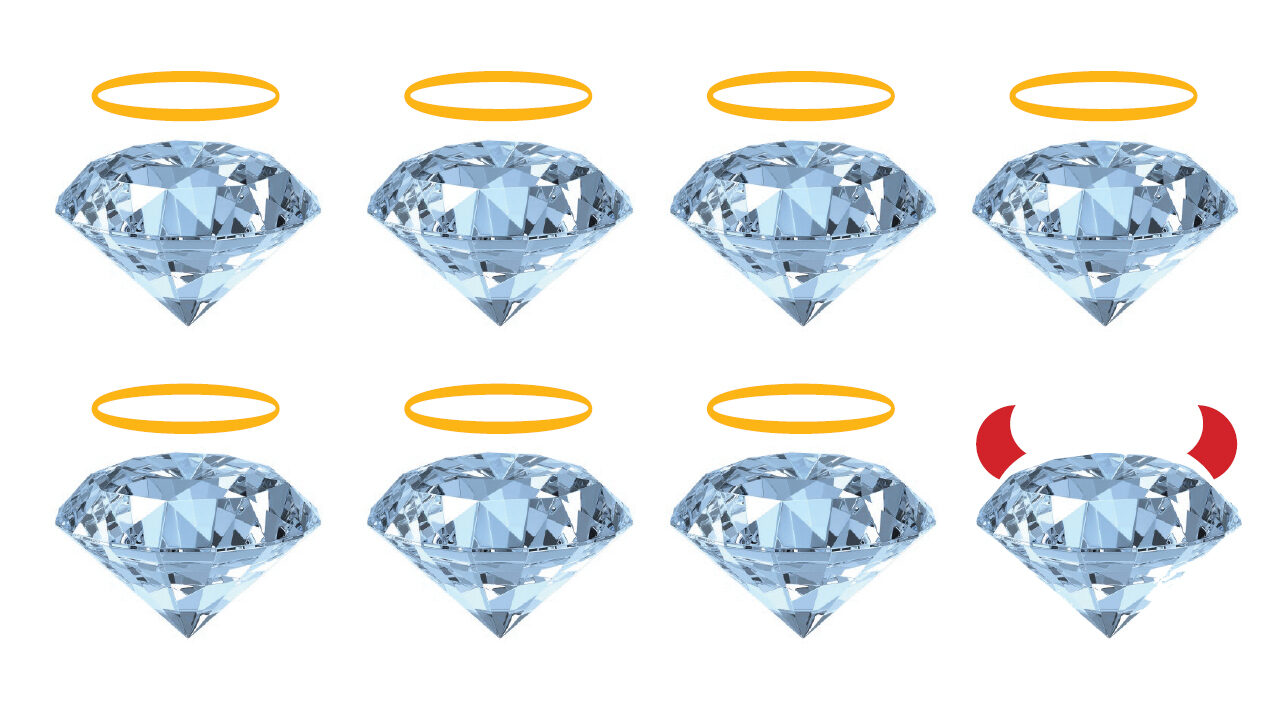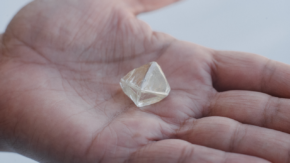With synthetic diamonds entering the supply chain as counterfeits in greater numbers than ever before, retailers are under pressure to protect their customers… and their reputations.
For many jewelers, lab-grown diamonds are a matter of choice. And just like natural, mined diamonds, colored gemstones, crystals, or cubic zirconia, synthetic diamonds have their place in the jewelry market, according to Stanley Zale, vice president at US-based jewelry wholesaler Stuller Inc.
“We’re in the jewelry business, and jewelry is not defined by diamonds — it’s all jewelry,” he says. “Like it or not, lab grown is part of the industry.”
For Stuller, which started offering lab created diamonds to its retail customers at the end of 2015, it’s a matter of plugging the holes in the supply chain so consumers have a full range of products to choose from.
PROPER DISCLOSURE
However, in order to make that choice possible, there has to be proper disclosure of lab-grown production, Zale stresses.
To that end, jewelers are working closely with suppliers to hammer home the importance of disclosure in protecting consumer trust, says David Bonaparte, president and CEO of Jewelers of America.
The umbrella body also provides guidance to its members on this topic, he adds.
Much depends on how far diamond suppliers are willing to go to ensure natural and lab-grown diamonds are kept separate.
Signet Jewelers — the largest jewelry retailer in the US — does not deal in lab-grown diamonds, for instance, and maintains strict policies with its suppliers to make sure it doesn’t receive any, says David Bouffard, the company’s vice-president of corporate affairs.
“We are aware of the issues being raised over the possible mixing of lab grown with natural diamonds in the supply chain, and we take the potential impact on our company’s supply chain very seriously,” he affirms.
We are aware of the issues being raised over the possible mixing of lab-grown diamonds in the supply
David Bouffard, vice president, Signet Jewelers
chain.’
TRADE ASSURANCE
Last year, Signet launched its Responsible Sourcing Protocol for Diamonds, which largely focuses on the principle of knowing your supplier — and your supplier’s supplier — to make sure distribution channels remain ethical.
Other retailers, such as Tiffany & Co., have launched their own programs to ensure their products’ paths can be traced from the mine to the retail store, guaranteeing that their diamond jewelry is free not only of synthetic stones, but also of association with conflict and human rights abuses.
According to Bouffard, retailers are confident that the industry is serious about handling the synthetics issue, as there have been relatively few undisclosed lab-grown diamonds identified recently, out of the millions of diamonds around the world.
“That’s a demonstration the industry has systems in place to detect them, can identify those who would try to commit fraud, and bring them to justice [under] their respective law of the land,” he says.
Indeed, while mixing was prevalent a few years ago, the industry dealt with it, and today there are hardly any cases of undisclosed synthetics mixed with natural diamonds, reports Praveenshankar Pandya, chairman of India’s Gem and Jewellery Export Promotion Council (GJEPC).
That’s largely due to strong action on the part of the various bourses; lab-grown diamonds are now banned at the Bharat Diamond Bourse in Mumbai, the Israel Diamond Exchange and others.
Ernie Blom, president of the World Federation of Diamond Bourses (WFDB), says the bourses are encouraged to take a hard line against fraudulent activity and bring criminal charges against those who don’t properly disclose.
However, prevention is better than cure, and more diamantaires are using synthetics-testing services and buying machines for in-house use, so they can provide retailers with the assurance that their goods are 100% natural, Blom says.
3 Factors to Be Aware Of
1. While there have been fewer cases of undisclosed synthetics in parcels of loose diamonds, more are being set in finished jewelry, making retailers vulnerable.
2. Jewelers must ensure their inventory has been checked for undisclosed synthetics. And they must be able to vouch for their suppliers, and their suppliers’ suppliers.
3. Traceability and responsible sourcing programs are gaining momentum to ensure ethical supply chains.
TELLING THE RIGHT STORY
As a supplier of both natural and lab-grown diamonds, Stuller does its own checking even after the goods have been tested, and keeps a strict separation between the two, Zale says. The company also includes a chapter on synthetic diamonds at its educational “Bridge” events, since there is still some level of misconception about these diamonds among consumers, he adds.
Jewelers, in turn, can educate consumers and increase public awareness about disclosure issues.
Greater education also allows retailers to focus on the merits of both products, rather than on the negative marketing some promoters use, such as the claim that lab-grown diamonds are more ethical or environmentally friendly than natural.
From Stuller’s point of view, it’s not about making those claims; it’s simply about providing a choice. In fact, Zale stresses, the natural diamond industry needs to counter the negative marketing against it by highlighting the positive contribution diamonds make in society.
Bonaparte agrees. Jewelers have an incredible opportunity to listen to the needs of their clients and customers when it comes to both products, he says.
“Consumer interest in lab-grown diamonds can be founded on many different principles, from price to ethics,” he notes. “It can be said that both mined and lab-grown diamonds have wonderful stories to tell. It is the jeweler’s job to tell those stories.”




